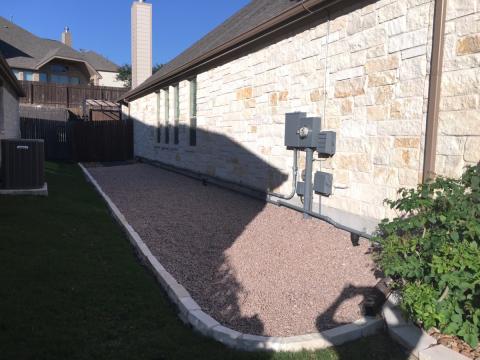
Watering your foundation may be more psychological than an engineering requirement?
Some engineers blame foundation movement to homeowners because the engineer did not observe soaker hoses watering a foundation. So we went through all of our engineering design manuals, theories and software to look for the engineering parameter that influenced the foundation design if the foundation is watered or not watered. Not to our surprise we found nothing. We design foundations to react to the movement of the soils based on the soil classification, relative moisture content and climate. It is important to understand that foundations are designed to move. Especially those that rely on the near surface soils for support. Let’s discuss each parameter:
· Soil Classification: Soils are broken up into two general types: cohesive and non-cohesive. For simplicity, cohesive soils are clays and non-cohesive soils are aggregates, such as sand and gravel. Cohesive soils (clays) will expand (swell) when wet and shrink when dried. Non-cohesive soils will not expand (or swell) when wet but they may settle when wet or dried. Notice we that we used the works settle and shrink. They are not the same. An easy way to remember the difference is to think that clays shrink/swell and sands settle. Shrinking soils will swell when wet were as settling soils will remain settled unless disturbed. If the soils around your house get “muddy” when wet then they are probably clays that will shrink or swell, not settle. On the engineering side, designing a foundation on clays is primarily concerned with clays shrinking or swelling. The amount the clay can shrink or swell has a lot to do with the classification of the clay.
· Relative Moisture Content: This is the amount of water that is absorbed by the soils. Now that you know that clays shrink and swell you can understand why you see cracks in the soils around your house. The cracks in the soil occur because the soils have lost moisture (water) and have shrunk (not settled). When designing foundations for houses, engineers typically assume the soils are dry and so we design the foundation to move when the soils get wet and swell. The equations and software that we use does not consider if you water the soils or not. We only care about what happens when the moisture content changes. Watering a foundation may actually cause soils to consolidate (be pressed down, this is not settlement) as the soils feel the pressure of the house. For example, you can crumble dry bread in your hand but if you add the right amount of water you can actually form it into a nice firm shape. This is consolidation also known as compaction. Clays that are loose and get the right amount of moisture will consolidate under pressure. This can happen with or without a drought. It can happen with soaker hoses.
· Climate: El Nino is to blame for watering or not watering your foundation. However, the climate around your house is a factor in the design of foundations. We have a factor called the Thorwaine Index which is an index that is assigned to a region. All regions have a factor. This factor is based on the amount of rain fall. Arid regions have a low factor. This factor does not account for you watering your foundation. You cannot place enough water to influence the factor. It is up to El Nino which is considered an Act of God for the warranties. We don’t recommend blaming God for anything.
Considering the three general factors together, if we design your foundation there is no way for us to take your watering effort into consideration. We simply design for a worst case scenario which is a foundation on very dry soil that gets wet and swells up. If the foundation soils dry out and shrinks then the design effects are the same but in the opposite direction. Something else to consider is the basic observation that the soils you are watering are not the soils that support your foundation since they are next to the foundation and not below it. A very important factor that does influence the performance of your foundation is the depth the foundation is below the ground. The deeper that your foundation is the less susceptible it will be to the climate. The International Building Code states that all foundations should be at least 12” below the adjacent soil. This is a minimum. A depth of at least 24” is better. Having a blanket recommendation to water your foundation falls short of the full consideration that structural engineers take into account for foundation design.
- Log in to post comments
